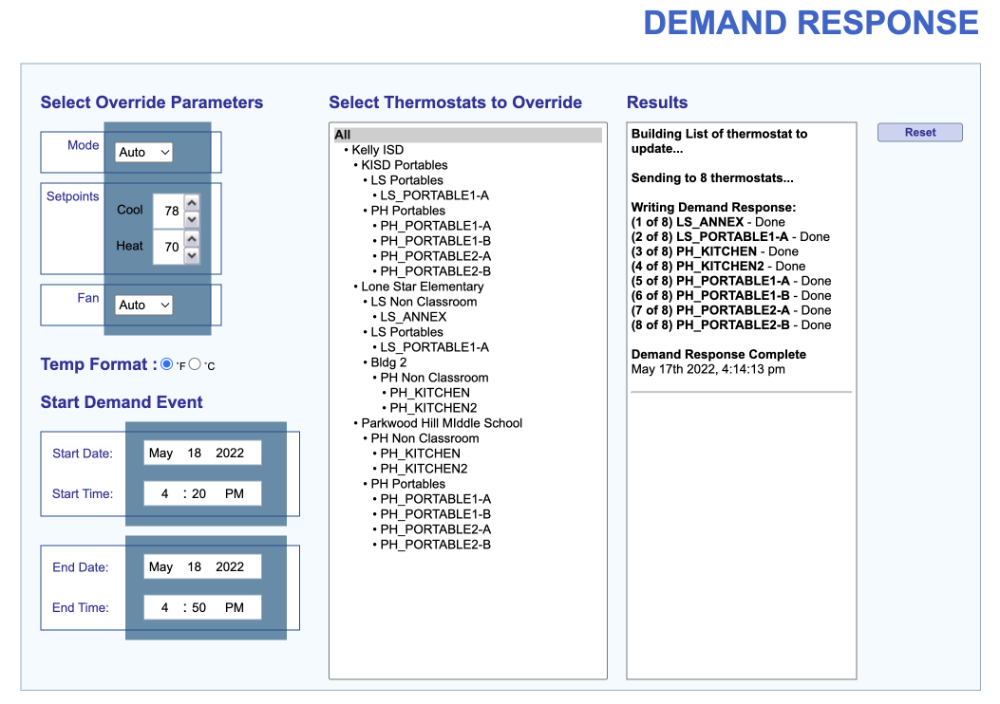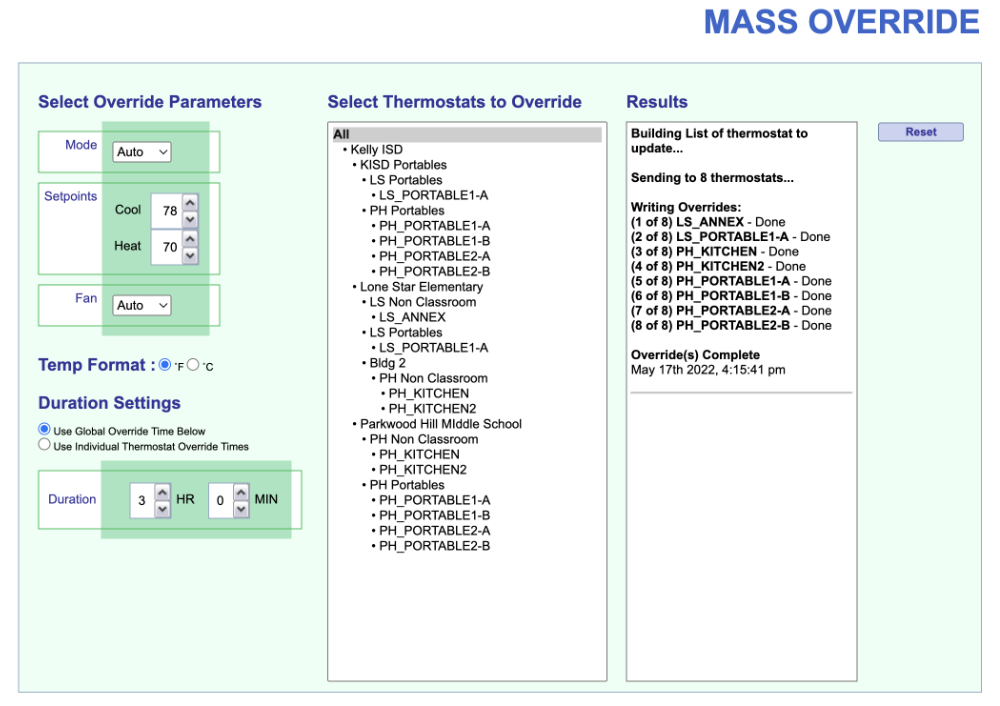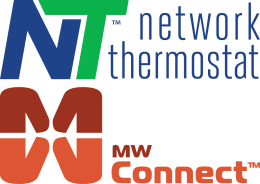NetX Demand Response and 4CP Programs - On-Demand Energy Savings
Everybody is experiencing the pain of rising energy prices. According to the DOE Office of Electricity, “Demand Response provides an opportunity for consumers to play a significant role in the operation of the electric grid by reducing or shifting their electricity usage during peak periods in response to time-based rates or other forms of financial incentives.”1 Electric providers reward consumers using Demand Response with energy credits or cash rebates that reduce their overall utility costs. One challenge is the limited time window available to react to utility demand response notifications. Learn how Network Thermostat lets you take advantage of these rebates simply and efficiently.
What Do These Mean and How Do They Affect Me?
Demand Response (DR) and Four Coincident Peak (4CP) Demand Charge Management programs are often used interchangeably, but they are actually different programs. DR Programs from utility companies pay customers for curtailing load when prices spike on the grid. There are no direct payments to customers on 4CP programs, but rather a cost savings program associated with the demand on the grid (not peak electricity pricing). With 4CP programs, no direct payments are made to participating customers, but rather, cost savings, based on grid demand reduction, are passed along. What does the ‘four’ mean in 4CP? The four months of summer - June, July, August, September.
Commercial customers are billed for both consumption (like residential customers) and for peak demand usage. For Peak Demand calculations, utility companies typically take interval data readings (IDRs) every 15 minutes during the summer months and apply the highest 15-minute reading to the bill as the ‘demand.’ This high reading sets the ‘demand’ charge for the next year! How big are demand charges? It depends on the business and usage, but it can be anywhere between 30% and 70% of the total electric bill.
Obviously, the two program types are linked. They both hinge on grid demand during the summer months when usage is the highest. Since we have to keep our computers active, lights on and machines working, what’s the best place to make an impact? According to the U.S. Energy Information Administration's (EIA) 2017 Annual Energy Outlook (AEO), HVAC systems will consume roughly 30% of the total commercial building energy consumption.2 To lower your HVAC usage, especially during the 4CP event timings, use Demand Response to initiate temperature setbacks.
The Challenge
Setting one thermostat back does not take much time. Maybe a minute or two. Now compound that with 250, 500, or even 1,000 thermostats or more, and you can see where responding to a 4CP or Demand Response event can become problematic. Typically, 4CP requests will come from utility companies a day or two in advance. While that allows a little time to make the changes, is it enough? Do you have extra time in your busy schedule to temporarily adjust a lot of thermostats for only a few hours and then readjust them? Of course not. None of us do! If you have NetX thermostats with NetX Cloud, you point and click and add money to your bottom line.
Setting The Demand Response or 4CP
Simply log in to your NetX-Cloud account and click the DR (Demand Response) icon on the upper right of the page. There you will see a three-panel window. A simple three-step process to ensure you are taking advantage of demand response credits. On the left panel, you select your “Override Parameters”, and the start and stop times. Simple. In the center panel, you select the thermostat(s) you want to include the demand response event. This is especially helpful if you manage multiple properties in multiple locations where the demand response events may differ. On the right panel is the real benefit. After you click apply. The panel adds the demand response to each thermostat selected and documents it in the results bar, giving you peace of mind that your updates have been applied.

Results
The NetX system can send and confirm updates to hundreds if not thousands of NetX thermostats in just a few moments. Confirmation of each thermostat is documented in the response panel. If there is ever a problem with communication, That thermostat is added to a retry list with the ability to click on that thermostat, troubleshoot any issues and return to the Demand Response page without losing your place.
Mass Override
Just like Demand Response, Mass Override has the same three-panel control layout. The only difference is how time is determined. With Demand Response a Start and Stop Date and Time must be entered. With Mass Override, the time applied is determined by hours and minutes with a maximum of up to 24 hours. Also with Mass Override, the override time can rely on the thermostat’s default override timer setting. Mass overrides are more useful when you need to immediately start an override that runs for a short time. Another difference between Mass Override and Demand Response is that Mass Overrides can be canceled from the NetX faceplate. An important fact when trying to maximize your energy consumption.

Summary
Participating in Demand Response and 4CP programs can save your organization an incredible amount of money. Until now, capitalizing on these rebates and credits created lots of extra work and stress for a facility manager. Network Thermostat is here to make their day a lot easier. For a demonstration of Demand Response / 4CP, Mass Override, and how NetX-Cloud and NetX thermostats can save you time, energy, and money. Request a demo today.
Request Demand Response Demo Today!
2https://www.energy.gov/sites/prod/files/2017/12/f46/bto-DOE-Comm-HVAC-Report-12-21-17.pdf



